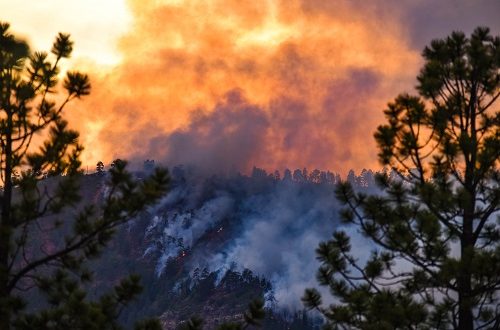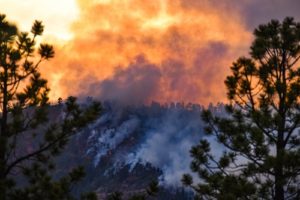Wind During Wildfires
Fires need certain elements to burn. They make use of everything around them to keep burning, and part of that is the wind. And you’ll know that windspeeds can easily hit 60mph, with some reaching as high as 100mph.
If fires ignite during a wind event, it will lead to the flames spreading for hundred of yards. It doesn’t matter if there is a lot of fuel nearby. The wind will help the sparks travel, which is why it’s so important to have the right zones around your house when you build it in an area prone to wildfires.
The Creation of Fire Spots
When fires start during a wind event, the wind will blow some of the sparks to other areas. New fire spots emerge, and they can be in front of the main fire, creating a new and far more dangerous problem.
The fires will work together to create a catastrophic event in the forest. This has happened in the past.
For example, the 2011 Wallow Fire in Arizona saw embers ignite three miles ahead of the original flames due to the wind. Australian fires have seen spots igniting 10 miles ahead!
There can be a lot of firebrands that spread around. In the 2011 Bastrop Fire in Texas, one trampoline had 250 burn holes within a square meter of fabric due to the firebrands.
Downslope and Upslope Problems
When it comes to building homes in areas prone to wildfires, you need to anticipate both downslope and upslope problems. It’s important to consider just how the firebrands can travel.
If you live in an area with downslope winds, you pretty much know the direction the fire is going to travel. If you get a hint of smoke, you’ll want to get your go bags and leave.
On a night, you may get the whiff of smoke when the fire is nowhere near you. This is linked to the way the ground cools and the wind travels. Take the smell seriously and be ready to move if you need to.
However, look out for the upslope winds. As the warm air rises in the sun’s heat, wildfires can start. Remember some of these fires are natural, while a lot of others are human made. Upslope winds can reach 5 to 10 mph, which isn’t as dangerous as the stronger winds, but still pose a threat.
By understanding the way wind can cause a fire to spread, you can be far more protected when it comes to wildfires in the local area. It’s also important for firefighters to understand the dangers and try to predict the travel of fires to be able to put them out.

